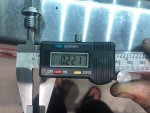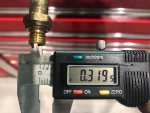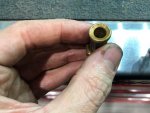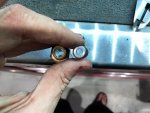I think both of you are correct. If you look at what he wrote he stated the smallest opening would be the highest restriction. He wasn't stating that the remaining line had no contribution to the overall pressure drop, just the highest restriction was the smallest opening.
Ultimately it is the smallest/highest restriction that will determine your max flow vs pressure. As an example, if a 1/2" line provides say 3 gallons per minute at X pressure and a 1/8" port restricts it to 0.5 gallons then upgrading to 5/8" line would not gain you anything
Of course a 1/8" line the whole way woud net you less the just a port at 1/8" but there is a steep diminishing returns on larger feed lines
Exactly.
If the restriction at the end of the line is fixed and pressure is controlled by a regulator of sorts to maintain steady pressure, providing the pump can maintain the flow to achieve said pressure, larger line size will gain you nothing. Going 1/2” to 5/8” but still putting it through a 1/8” orfice at the end of the line over say 10’ of hose will not change the flow rate through the orfice. This in terms is speaking of an application in a vehicle where friction loses are almost negligible. In 100’ of hose, hose size matters more as you would lose flow to friction although this can be overcome by a higher volume pump but also increases heat into the system.
However if you increase the orfice size or add a second orfice in parallel to the first i.e. dual cp3 then yes a larger line size may benefit you as would running two lines from the outlet of the pump.
Keep in mind you are still limited by the smallest restriction-which in some cases may even be the pump outlet. Hence why a -12 pump outlet in most of our trucks is ideal to allow for increased flow requirements downstream as desired.





